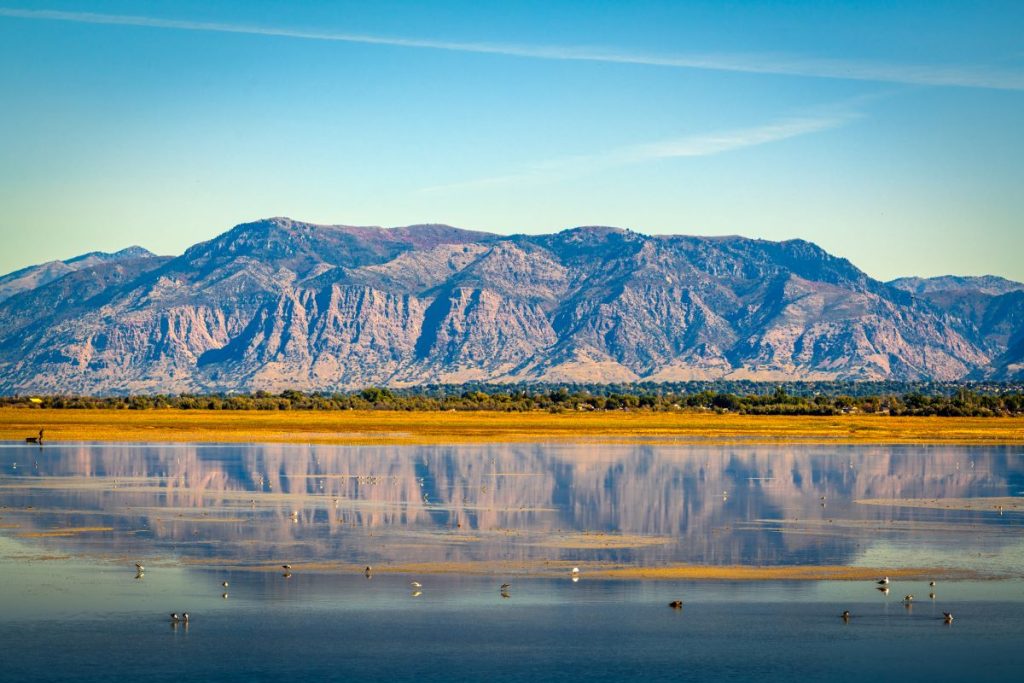Utah is making significant efforts to address the vital issue of evapotranspiration, a process that plays a crucial role in the state’s water resource management. To improve understanding and management of this elusive water problem, the Utah Geological Survey (UGS) has partnered with the Utah Division of Water Rights to establish the Utah Flux Network. This initiative involves setting up a statewide array of advanced weather stations specifically designed to measure evapotranspiration—the combined process of water evaporating from soil and bodies of water and transpiration from plants. Understanding evapotranspiration is particularly essential in Utah, where much of the water does not flow out of the state but is rather lost to the atmosphere, potentially undermining water conservation and management strategies in an increasingly arid environment.
The Utah Flux Network commenced in 2021 with just two monitoring sites, but has since expanded to nine locations throughout the state, encompassing a variety of landscapes, from the wetlands in Moab to the salt flats in northern Utah. Each weather station is equipped with advanced scientific instruments that gather crucial meteorological data, including wind speed, humidity, soil moisture, and solar radiation. This data collection is vital for calculating real-time evapotranspiration rates, which can significantly inform water management practices. Leading this effort, Paul Inkenbrandt, a senior geologist and hydrogeologist with the UGS, emphasized the complexity and importance of accurately understanding evapotranspiration’s role in the local water cycle, as it is often the most challenging aspect to quantify effectively.
A core methodology employed by the Utah Flux Network is the eddy covariance technique, which allows for precise measurement of turbulent wind patterns that carry water vapor away from the ground—an essential factor in estimating water loss due to evapotranspiration. The eddies, which can be rapidly changing wind patterns, are crucial for this measurement because they enhance the removal of evapotranspired water from the source, which in turn facilitates more water loss from that area. Inkenbrandt noted that the network stations sample data ten times every second, enabling the collection of extensive datasets that can lead to valuable insights for various stakeholders, including farmers, policymakers, and environmental advocates.
The data generated from the Utah Flux Network holds significant implications for agricultural practices, water policy, and conservation efforts. For farmers, understanding the rates of evapotranspiration can provide critical insights on water used for irrigation, allowing for improved practices and crop selection to optimize water use. Additionally, the data is vital for shaping water policies aimed at preserving key ecological sites, notably the Great Salt Lake, which is facing substantial water loss. By understanding how evapotranspiration affects the lake’s ecosystem, decision-makers can make informed choices regarding water allocation to ensure its sustainability.
Furthermore, the information captured by the network is expected to play a pivotal role in ongoing negotiations concerning the Colorado River, a crucial water source for seven states, including Utah. As discussions around equitable water allocation intensify due to diminishing supplies and the impending expiration of a key agreement at the end of 2025, having precise measurements of water use will strengthen Utah’s position in these negotiations. Inkenbrandt highlighted the necessity of accurate data on consumptive water use, stating, “Good measurement of consumptive use is critical for effective management,” akin to budgeting without knowledge of expenditures.
In addition to agricultural and policy implications, the Utah Flux Network’s findings could also help address ecological challenges, particularly the management of invasive plant species that significantly contribute to water consumption. For instance, monitoring evapotranspiration rates before and after the removal of invasive species like phragmites enables researchers to quantify their impact on local water systems. This information can justify and support efforts in ecological restoration, ensuring that conservation initiatives are grounded in scientifically sound data.
While the network is currently in the early stages of its data collection and analysis, its potential to inform smarter water usage and conservation strategies across Utah appears promising. By enhancing the understanding of evapotranspiration and providing actionable insights for various applications, the Utah Flux Network is positioned to play a critical role in the state’s water management landscape, ultimately supporting efforts to preserve vital water resources in the face of growing environmental pressures.










